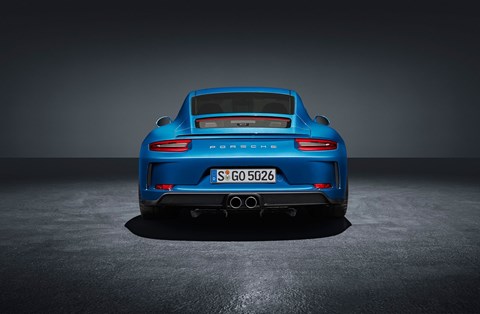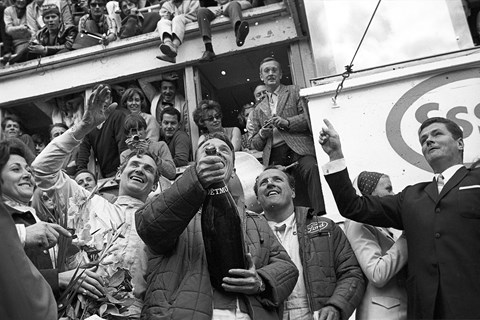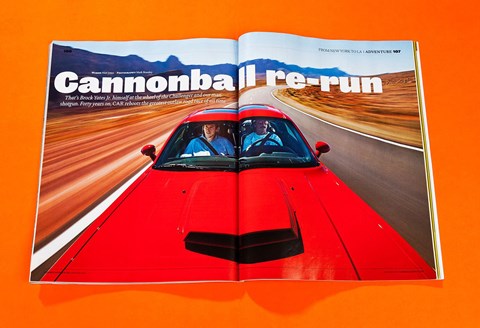► We pay tribute to Dan Gurney
► His lasting influence and legacy
► An amazing life: 1931-2018
American racing legend Dan Gurney has died, aged 86. The Eagle has flown, if you like. And though legend is an oft over-used term, in his case it seems almost entirely inadequate. Here are just a few things he will be remembered for.
Total racing hegemony in 1967
Want peak Gurney? This is probably it. In swift succession he qualified second at the Indy 500, won the Le Mans 24 hours in a Ford GT40, and then – just a week later – took victory at the Belgium Grand Prix, becoming only the second driver to win in a Formula 1 car built by his own team.
(The first was Jack Brabham, who managed it in 1966; amusingly the first F1 victory for a Brabham was delivered by Gurney in 1964. Gurney remains the only American to take a Grand Prix trophy in his own car.)
Winning at everything
As the three-week flush above hints, Gurney excelled at all kinds of racing. He was the first man to score wins in Formula 1, IndyCar, NASCAR and sportscars – a feat only Mario Andretti and Juan Pablo Montoya have replicated – and his career included no fewer than 41 pole positions and 51 victories over just 15 years of competitive driving.

The most compelling stat perhaps comes from NASCAR, where he won five out of the 16 races he ever entered. He also had victories in Can-Am and Trans-Am. He came second at the Indy 500. Twice.
The Gurney Eagles
Even after retiring from racing personally, he continued to win – with the All-American Racers business he founded with none other than Carroll Shelby. His AAR Eagles have also won in many disciplines (including 17 consecutive victories in IMSA with Toyota) and the firm was even involved in the initial development of the project that went on to become the Nissan Deltawing.
AAR is still going strong. And not just in racing – now it also makes critical components for companies like Space-X.
The Gurney Flap
That little lip you see on the trailing edge of so many cars – both road and racing? That’s a Gurney Flap. A simple device, typically mounted at right angles to the main body of a larger wing, it adds downforce and improves cornering speeds. You can see its influence even on contemporary sports cars such as the Porsche 911 GT3 Touring Pack (below).

These days you’ll find them on aeroplanes and helicopters, too. Gurney invented, built and deployed the first one in under an hour during a test session in 1971.
The Gurney Bubble
Gurney was a tall guy. In order for him to fit in a GT40 – famously just 40 inches from the ground – a rounded dome had to be grafted into the roof. This subsequently became known as the Gurney Bubble. Don’t knock it – he won Le Mans in a GT40, remember.
Spraying champagne
Gurney was also the first racing driver to intentionally spray victory champagne all over the crowd at the end of a race – again at the 1967 Le Mans.

The why is a little mysterious; he was perhaps deliberately echoing Jo Siffert’s accidental performance from the previous year, though rumour has it he didn’t drink, so perhaps had nothing better to do with the fizz.
Regardless, Gurney’s actions started the tradition that’s become so familiar today.
Full-face crash helmets
Gurney didn’t invent these, but pioneered their use in top-flight racing. How many lives has that saved?
Running from sea-to-shining-sea
In 1971 Gurney took part in the first proper Cannonball Baker Sea-To-Shining-Sea Memorial Trophy Dash – if you can use the word ‘proper’ in the context of an unsanctioned (read: illegal) competitive, uh, sprint on public roads from New York to California.

‘Sharing’ a Ferrari Daytona with journalist Brock Yates (the man responsible for the madness in the first place), Gurney drove almost all of the 2800 miles by himself, famously declaring that ‘at no time did we exceed 175mph.’
The time they set – 35 hours and 54 minutes – stood as an unofficial record for several years, representing an average speed of over 80mph.
The full story is well worth reading. It inspired the Cannonball Run movies…
CAR magazine recreated the Canonball Run in 2011, when we accompanied Brock Yates Jr from coast to coast